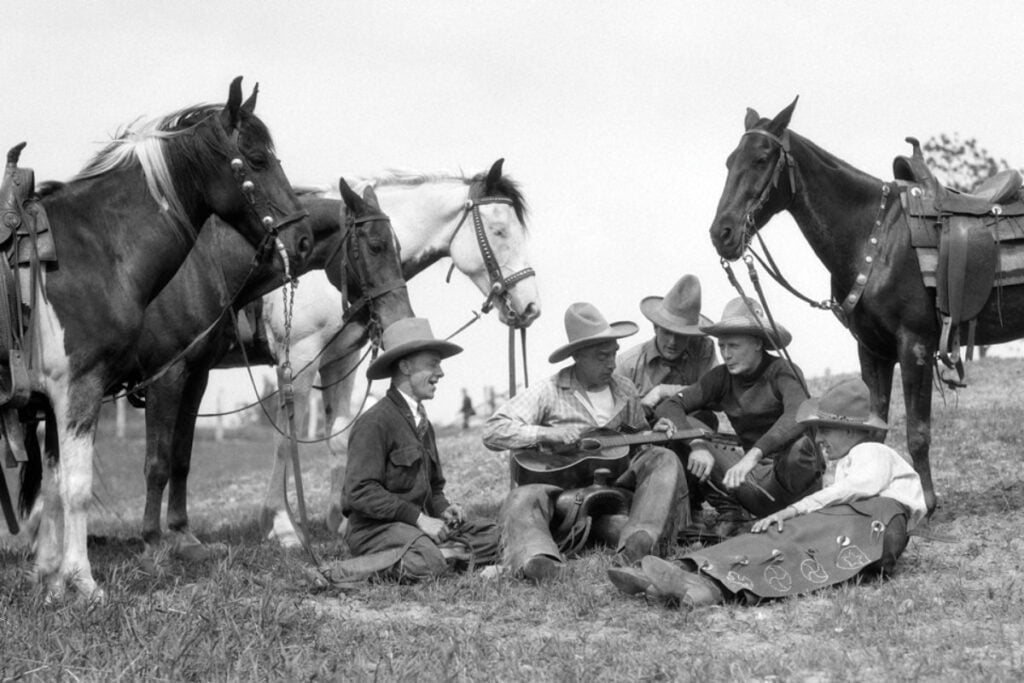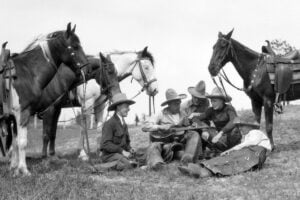
Early music in pioneer Kearney is found in the Native peoples’ music culture of the Great Plains, so rich in diversity and developed from their cultural traditions – birth, death, rites of passage, seasons, battles, and belief systems. Primarily vocals, crude recordings give us the ghost dances and peyote songs typically censored as dangerous by the U.S. government. As explorers, trappers, pioneers added their own stories and folk songs to the plains, they created the rich diversity of the plains with ballads rooted in European cultures. Using traditional melodies, they added lyrics about their American pioneer experiences.
Early in the pioneer settling of Kearney, the community was fortunate to have many fine musicians. Around 1871 a trio was formed with James A. Smith on violin, his brother George on guitar, and his wife Mrs. George Smith on piano. The first noted musical event was the Oratoria of Queen Esther with Mrs. A. H. Connor and F. G. Keens and performed in 1871. The first band was organized in 1875 and directed by William Brumbaugh. The first piano teacher in Kearney was Mrs. Charlotte Barnes who was joined by Professor Disraeli. The first music store was owned by E. B. Carter in 1877. And the first vocal instructor was Mrs. Amanda Swenson who also directed the Kearney Musical Society.
Music was introduced the schools in 1888 when supervisor Professor H. M. Draper reported 1000 pupils ready to play. In 1890s with the help of Mrs. Draper, they organized boys’ and girl’s bands that performed in More’s Hall, Kearney’s first opera house. In 1889 the Midway Band and Midway Orchestra were organized by Professor Benesch, a member of the Grand Army of the Republic, who camped on the plains west of Kearney.
In 1888 the Musical Society presented Gilbert and Sullivan’s H.M.S. Pinafore on a large boat on Kearney Lake, attended by the G.A.R. and the army. Also Chautauqua events began around 1889 and brought summer entertainment.


